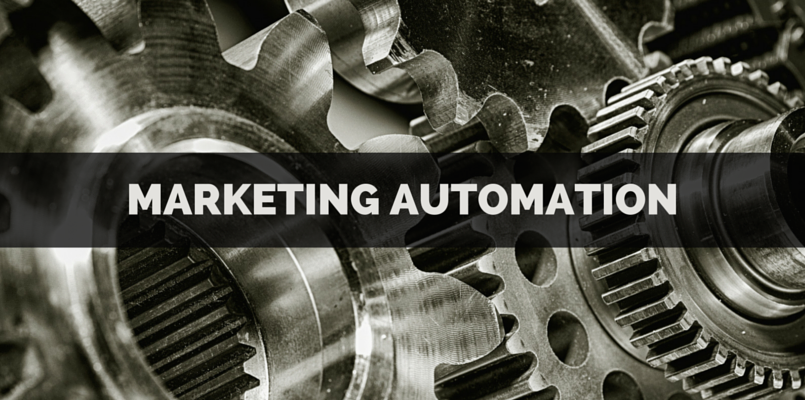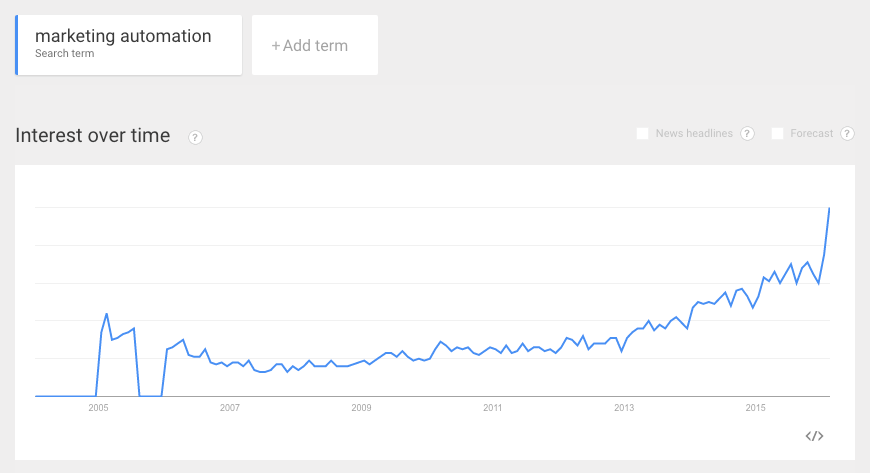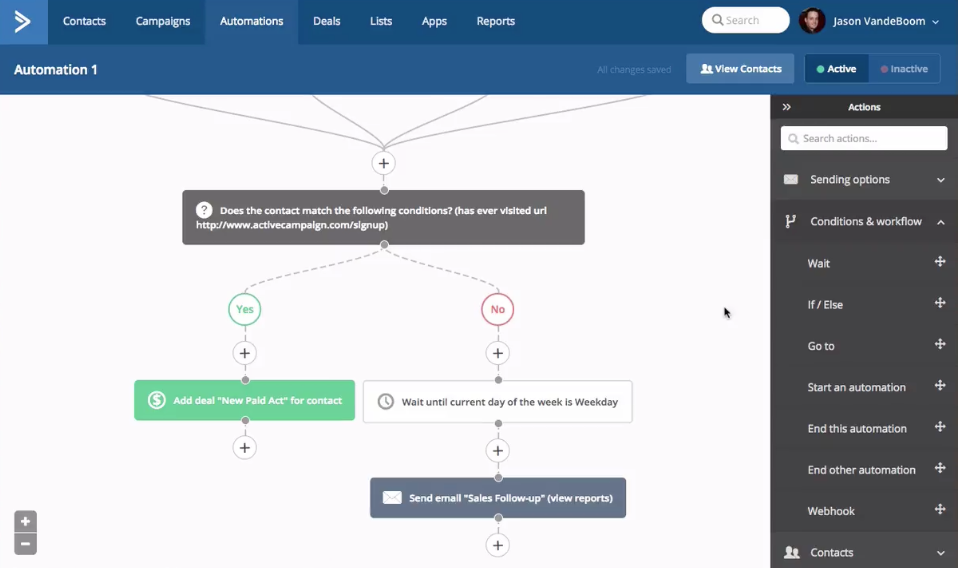What Is Marketing Automation and Why Does It Matter?

Remember how almost every marketer was talking about retargeting a couple of years ago? You would have thought it was the best thing since sliced bread.
These days, marketers are still using retargeting to generate repeat traffic to their websites, but it’s just a part of their standard operating procedure. Many would argue that if you’re running a paid media campaign, you can’t go wrong with including a retargeting campaign in the mix.
Well, guess what? There’s another buzzword making its way around marketing circles that is carrying just as much excitement as the enthusiasm of retargeting.
What is the buzzword? Well, it’s more like a buzzphrase.
It’s “marketing automation.”
If 2015 was the year of retargeting, then 2016 is already shaping up to be the year of marketing automation. We will get to the details of what that means for you in a moment.
First, let’s first try to define what we mean when saying marketing automation.
Here are some definitions from trusted online sources that are well-respected by marketers:
Jay Berkowitz, the Founder and CEO of Ten Golden Rules says, “Marketing Automation has been a game changer for our clients. We can target the right message at the right time to the right prospects. This is a tool that will only grow in popularity over the next couple years.”
If we turn to Marketo, they say, “Marketing automation is a category of technology that allows companies to streamline, automate, and measure marketing tasks and workflows, so they can increase operational efficiency and grow revenue faster.”
Lastly, Pardot explains, “Marketing automation works to automate your marketing communication programs. With a marketing automation platform in place, your marketing and sales teams can automate and optimize your lead generation and nurturing programs from initial prospect contact through the entire sales process.”
Of course, the term is not a new one, but according to Google Trends, the concept has recently begun to pick up serious momentum.

So, what does this mean for marketers?
For one thing, if you’re not already using some form of marketing automation, it’s time to seriously consider getting started so that you can lead the trends.
With that being said, let’s explore some ways you can begin right away.
If you’re interested in getting up and running with a marketing automation campaign, first you’re going to need to choose the right tools.
There are plenty of options out there, some of them much more expensive than others.
For most folks, it would probably be best if you begin with a mid-range system that can eventually be scaled up, rather than going out and buying an overpowered enterprise-level system from day one.
In that case, the tool we’d recommend you take a look at is ActiveCampaign.

They are certainly not the new kids on the block, having been around since 2003. But when it comes to marketing automation, they’re definitely on the cutting edge right now for those who are looking for an affordable solution that scales as your business grows.
At the heart of the ActiveCampaign platform is email. That is usually the case regardless of which platform or tool you’re using. Email is the lifeblood of marketing automation, at least at this point.
However, ActiveCampaign allows you to do much more with your email communications than a traditional email service provider.
For instance, you can set up powerful workflows that enable you to engage automatically with your contacts based on the specific actions they take, at precisely the right time.

Let’s say you’re trying to generate leads from a free webinar you’re running. Well, not everyone who signs up will attend your webinar.
With a system like ActiveCampaign, you can track who shows up and who doesn’t, and based on that behavior, you can send different emails to each group. That’s just a very basic implementation. Marketing automation gets much more complicated once you start modifying the workflows even further, based on how people are responding to earlier messages.
Imagine how helpful it would be if you could not only send personalized emails based on which actions someone takes, but you could also track which pages a lead visits on your site.
Or imagine a campaign that can automatically tag a contact as a hot lead, and trigger an immediate alert to your sales team once they’ve viewed your pricing page more than a certain number of times and watched your sales video to the end.
In closing, marketing automation is here to stay, just like retargeting. And when used correctly, it can not only help you save time in your business, but help you deliver a more personalized user experience than you would have ever believed possible.

